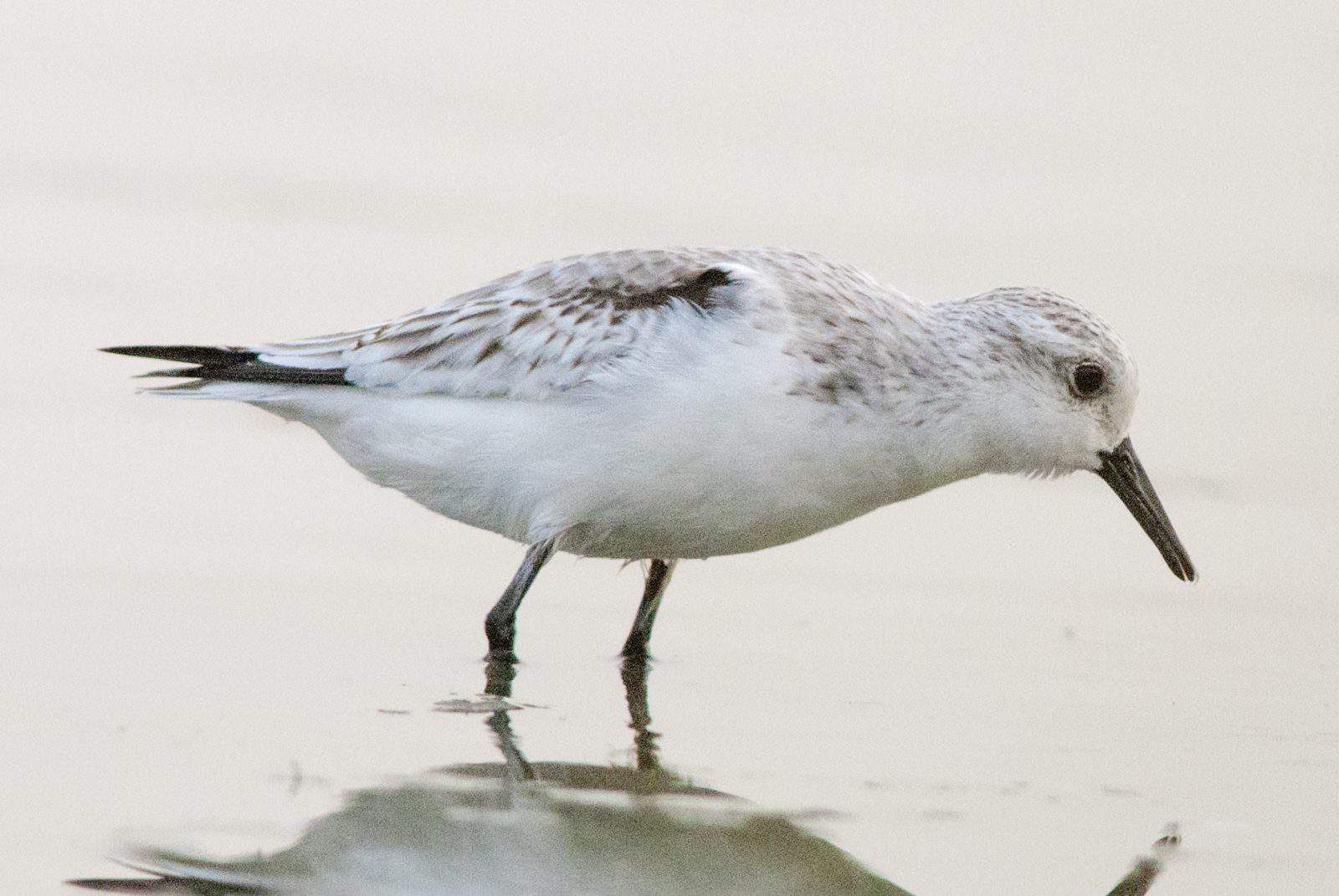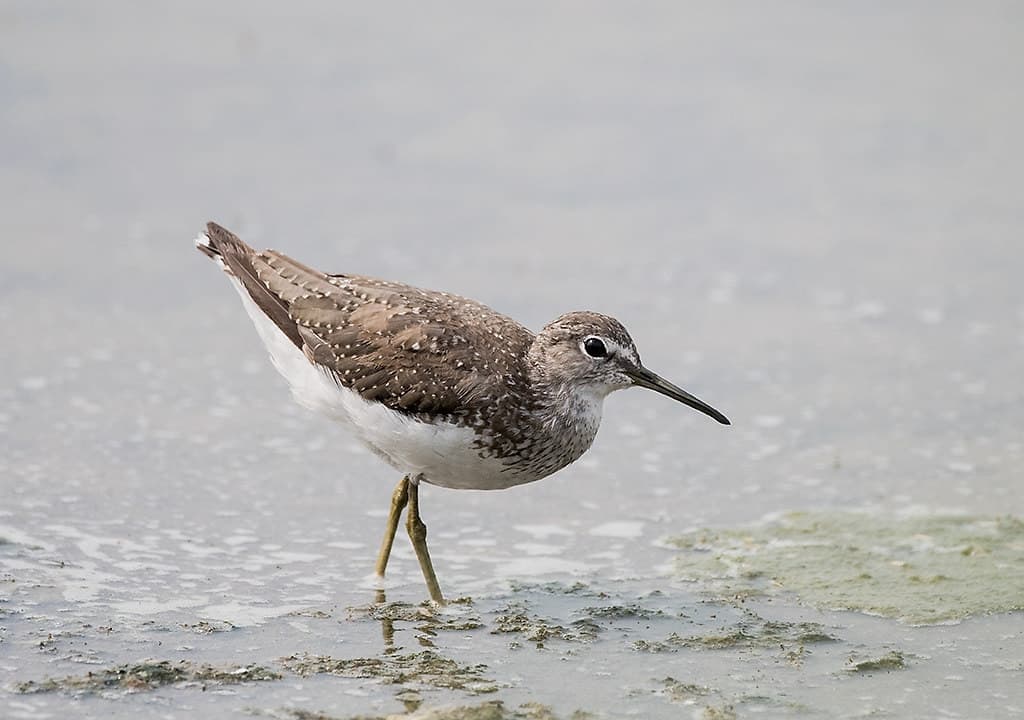Water Birds in Roquetas de Mar
Families

Arenaria interpres
Its name betrays a pattern that makes it easily identifiable, it finds food under the pebbles at the edges of ponds, so it scurries around the edges of flooded areas, turning them over and capturing the food. Stubby and medium-sized, it has a black, wedge-shaped beak, orange legs and a black pectoral band that contrasts […]

Calidris pugnax
It has a remarkable sexual dimorphism, the female is up to 20% smaller than the male and in nuptial plumage the male develops a striking and peculiar plumage formed by an erectile ruff and auricular bows that combine black, purple, white, brown and ochre and that play a very important role during the mating season, […]

Calidris alba
.This gregarious, nervous wader is identifiable by the dominance of white in its plumage. In winter it is mainly white, with a greyish back, nape and hood. The dorsal feathers form a scalloped pattern with these shades. In summer, its back acquires a checkerboard appearance and the face, neck and upper breast take on a […]

Thalasseus sandvicensis
A large tern, as the name anticipates, the legs are black at all ages and relatively short. The body is white, with a light, chalk-coloured upperpart. The head has a black hood running from the upper base of the bill, under the eyes and down to the nape. The head feathers form a characteristic and […]

Chroicocephalus genei
Somewhat similar to the Black-headed Gull, but larger, without a hood, slenderer and with a longer bill. The bill and legs are red. In summer, the adult’s breast turns pinkish. Its iris is clear, which also helps its identification.

Tringa erythropus
During the winter or in non-breeding plumage it can be confused with the common redshank, with which it shares not only the silhouette, but also very reddish legs, its plumage is lighter and the bill is longer, slightly curved at the end and red, at this time of year it is possibly the whitest of […]

Ardeola ralloides
Small heron, which in flight appears completely white, from below, showing a contrast with its back that once perched shows its brownish-ochre tones. In the mating season its beak has a strikingly bluish base and long ornamental feathers on the nape.

Aythya fuligula
This small diving duck is characteristic for having a tuft of feathers in the shape of a bun, which is longer and more striking in the male than in the female. The male is blackish in colour except for its belly and flanks, which are white, making it very easily identifiable. The female has a […]

Numenius phaeopus
It is a relatively large, densely mottled, ochre and brown wader. The longitudinal striping on the head alternates with a darker stripe running from bill to eyes and over the head. The beak is about a head and a half long, and its tip, instead of appearing curved, appears broken. The legs are short.

Ciconia ciconia
Easily identified due to its white plumage, large size, long legs and neck and powerful bill. The plumage is white with black wing edges, its bill and legs are red.

Oxyura leucoephala
It is a characteristic small diving duck. Its large head, bulbous bill and long tail make its silhouette easily identifiable. The male has a white head with black striped patterns and hood, and in the mating season it sports a striking bluish beak. The female lacks this beak colour and the tones of her head […]

Tringa glareola
Of all the sandpipers, it is the slenderest, even resembling a small redshank. Its long greyish-green legs contribute to its appearance. In summer it has dark olive-brown plumage which is densely flecked with white. The head and breast are finely striped, with a marked white line above the eye contrasting with the dark lines on […]
